The M1C and M1D Garand Sniper Rifles
March 2nd, 2021
7 minute read
It’s difficult to imagine now, but as America entered World War II in December 1941, the U.S. military had no appreciable sniper program and no designated sniper rifle.
The semi-automatic M1 Rifle, adopted in 1936, was still being developed as a sniper rifle. In the meantime, U.S. Ordnance turned to the simplified M1903A3 rifle, adopted in 1943, to create the straightforward sniper rifle designated the M1903A4.
M1903A4 — Problems and Imperfections
The M1903A4 is not an exceptional rifle by any means and was considered a disappointment as a sniping weapon by many. The commercial Weaver telescopic sight proved too fragile and prone to fogging in humid environments.
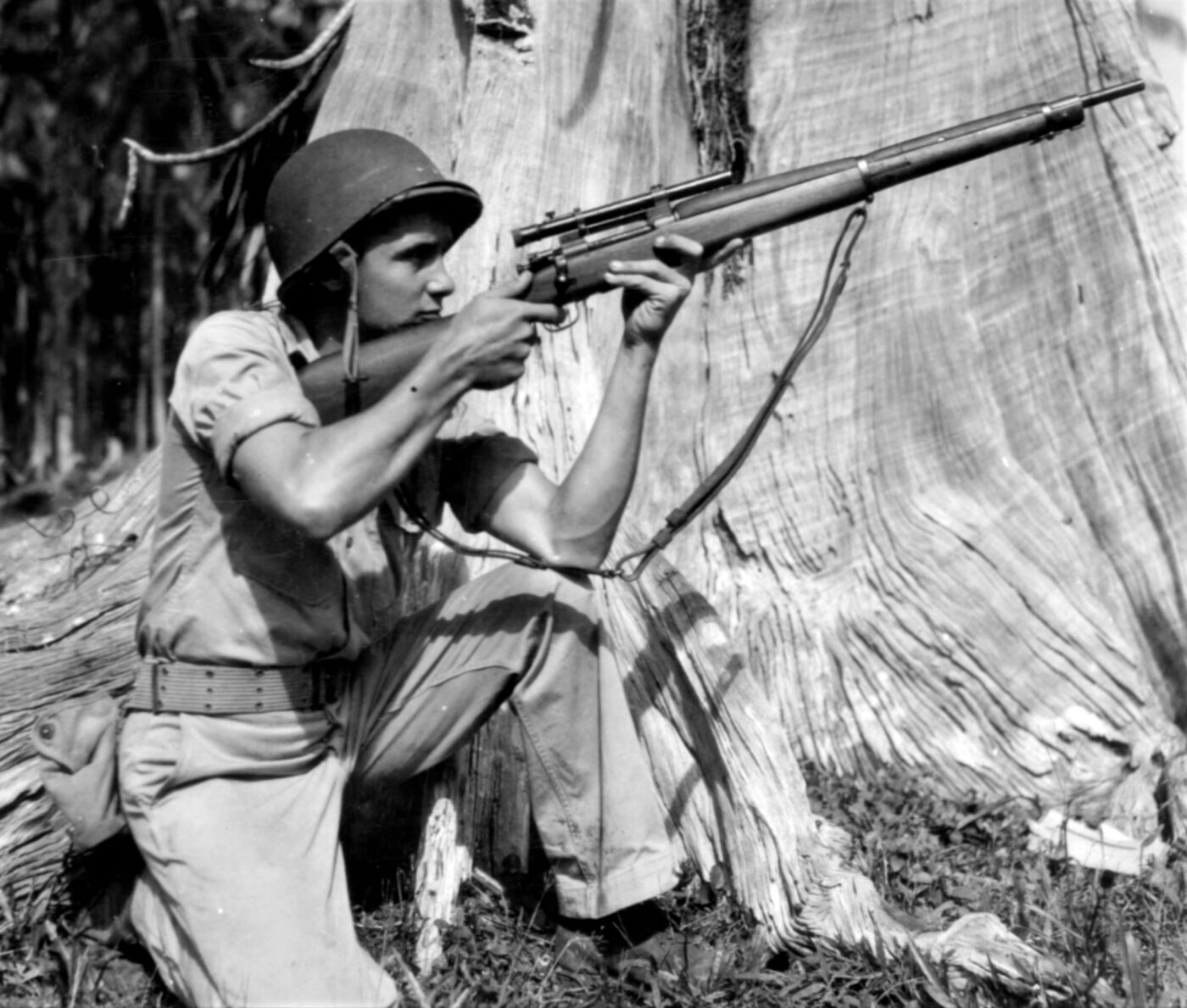
Perhaps a larger problem was the M1903A4 rifle was no more accurate than a standard M1903A3 battle rifle.
Most of the approximately 28,000 made during World War II went to the U.S. Army, but there were some that went to the Marine Corps. Even though the M1903A4 was a plain-Jane sniper rifle, they did enough good work to stay in U.S. service until the Korean War.
Beginnings of the M1 Sniper Rifles
In its earliest days, the M1 Rifle was troublesome to the old guard of Army NCOs. The old salts assumed that, when compared to the bolt-action M1903 Springfield rifle, the M1 was inaccurate and its semi-auto action would lead our soldiers to waste ammunition.
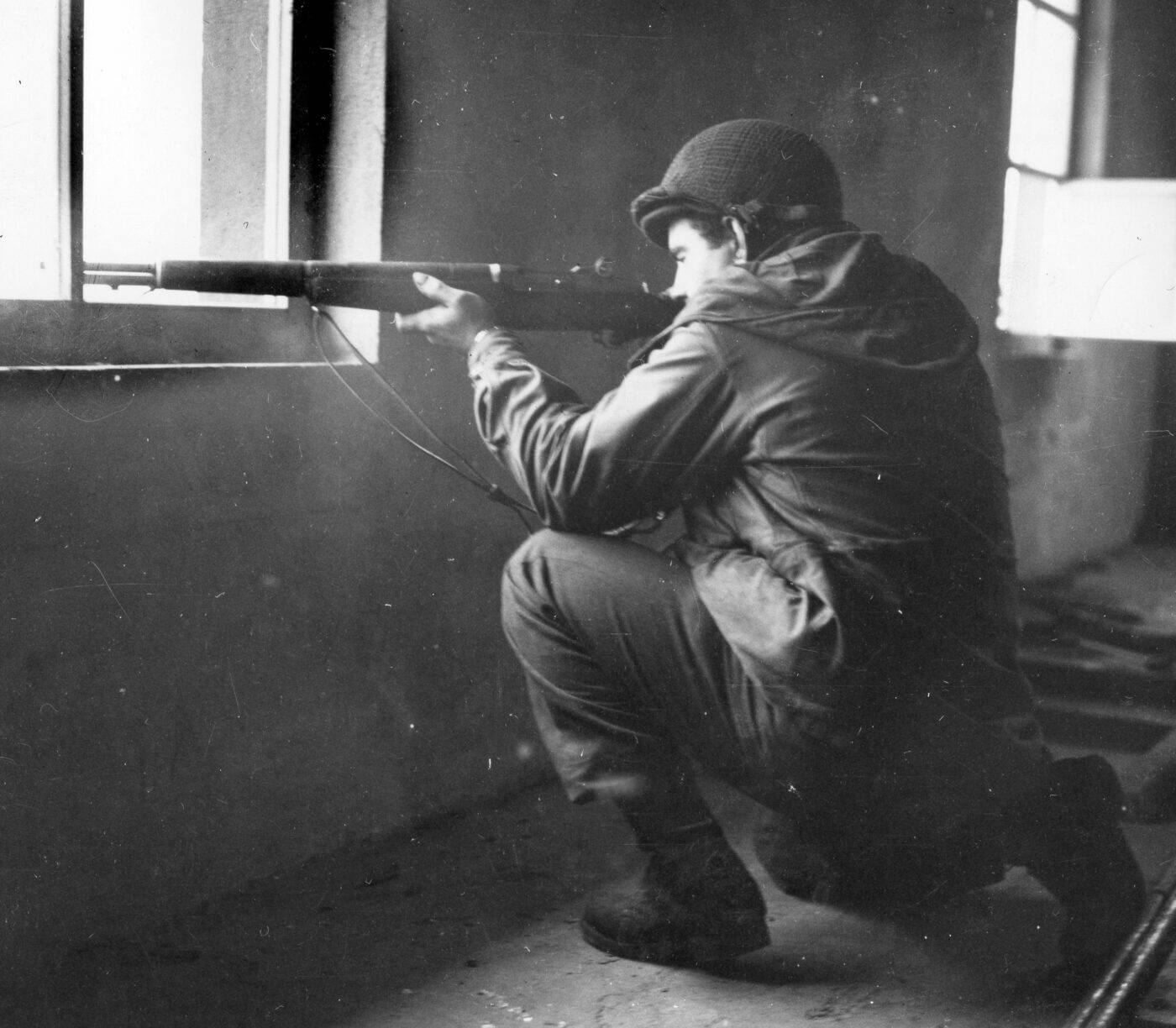
Some of these notions persisted until the M1 rifle finally entered combat in December 1941. The Garand rifles were found to be accurate, robust, and reliable, capable of delivering a high volume of fire in any combat environment.
Traditional American marksmanship meant the standard M1 rifle was often good enough to be used as a sniping weapon within the limits of human eyesight.
Back in the states, work progressed slowly on developing the M1 into a true sniping rifle equipped with a telescopic sight. But, there were obstacles to overcome.
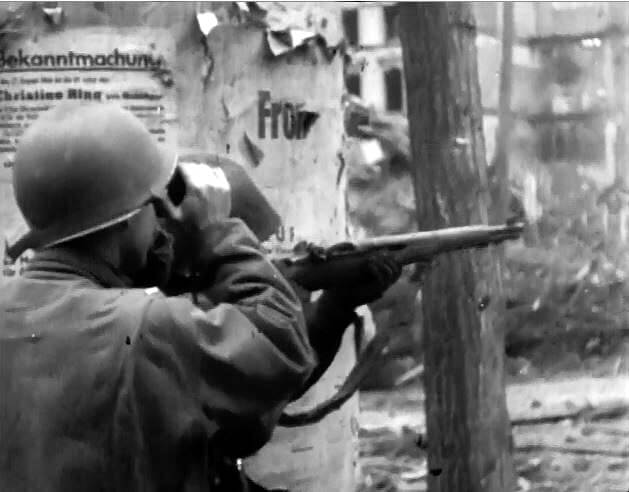
The M1’s top-loading and top-ejecting action was a significant challenge. Unable to mount the scope directly over the receiver, experiments were made with a prismatic scope that featured an offset tube. When this proved fruitless, U.S. Ordnance determined that the scope should be mounted on the left of the receiver — allowing normal operation of the M1 rifle.
Enter the M1C
Following a series of tests, a commercial telescopic sight base and mount built by Griffin & Howe (at that time owned by Abercrombie & Fitch) was chosen for the new M1 sniping variant.
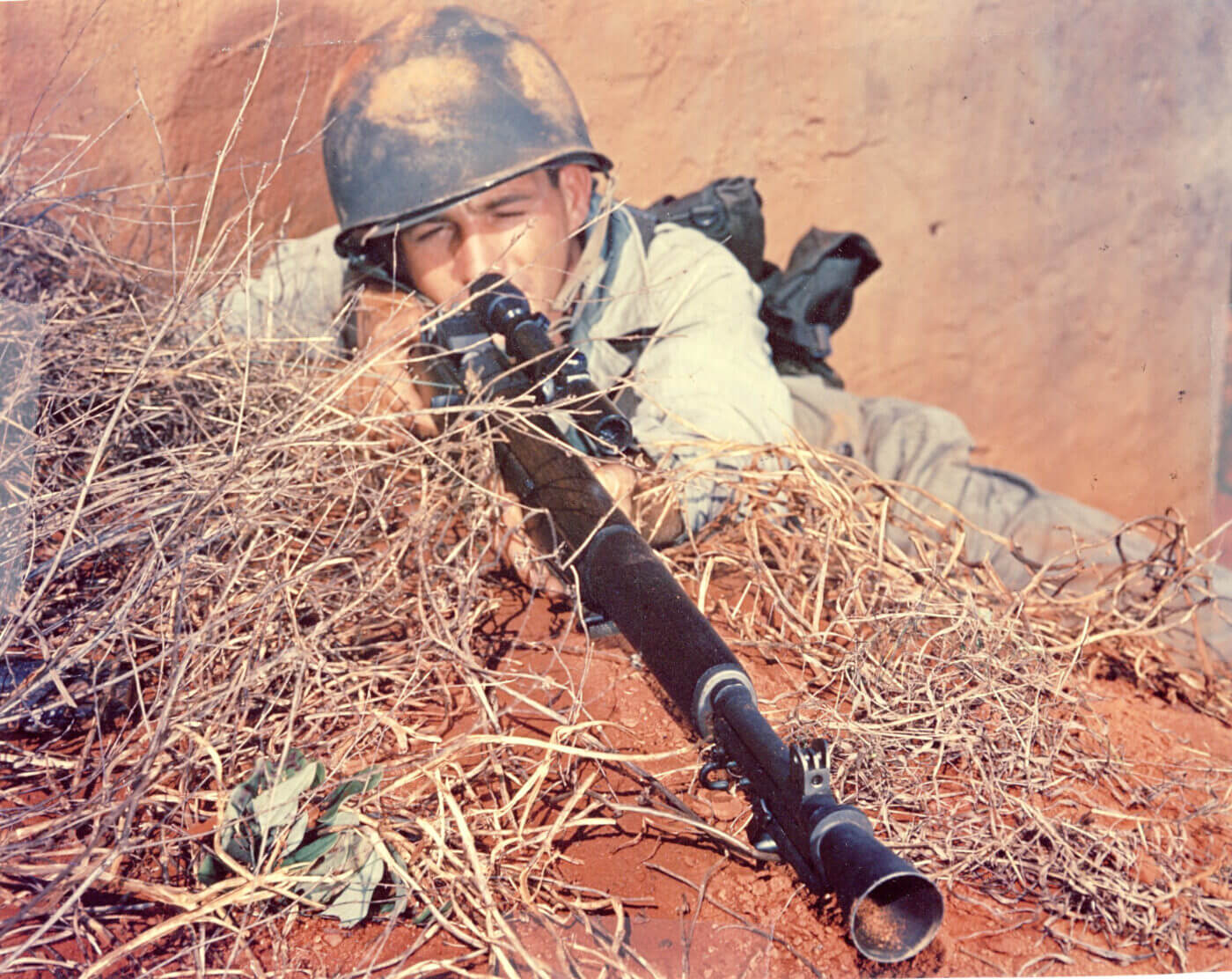
The strongly-constructed G&H base was attached to the M1 receiver with little modification — just three screws and two taper pins held the scope mount in place. The whole arrangement was sturdy and could easily be removed while maintaining the “zero” of the scope.
U.S. Ordnance chose the Lyman “Alaskan” telescope for the rifle, and the scope was later standardized in two versions: the M81 featuring a cross-hair reticle and the M82 using a tapered-post reticle.
During June 1944, the new rifle (designated M1E7) was adopted and standardized as the M1C. Consequently, the M1903A4 sniper rifle became “limited standard”.
However, production of the M1C did not begin in earnest at Springfield Armory until later that year, and the new sniper rifles only reached the troops in small amounts, and less than 8,000 were constructed before the end of the war.
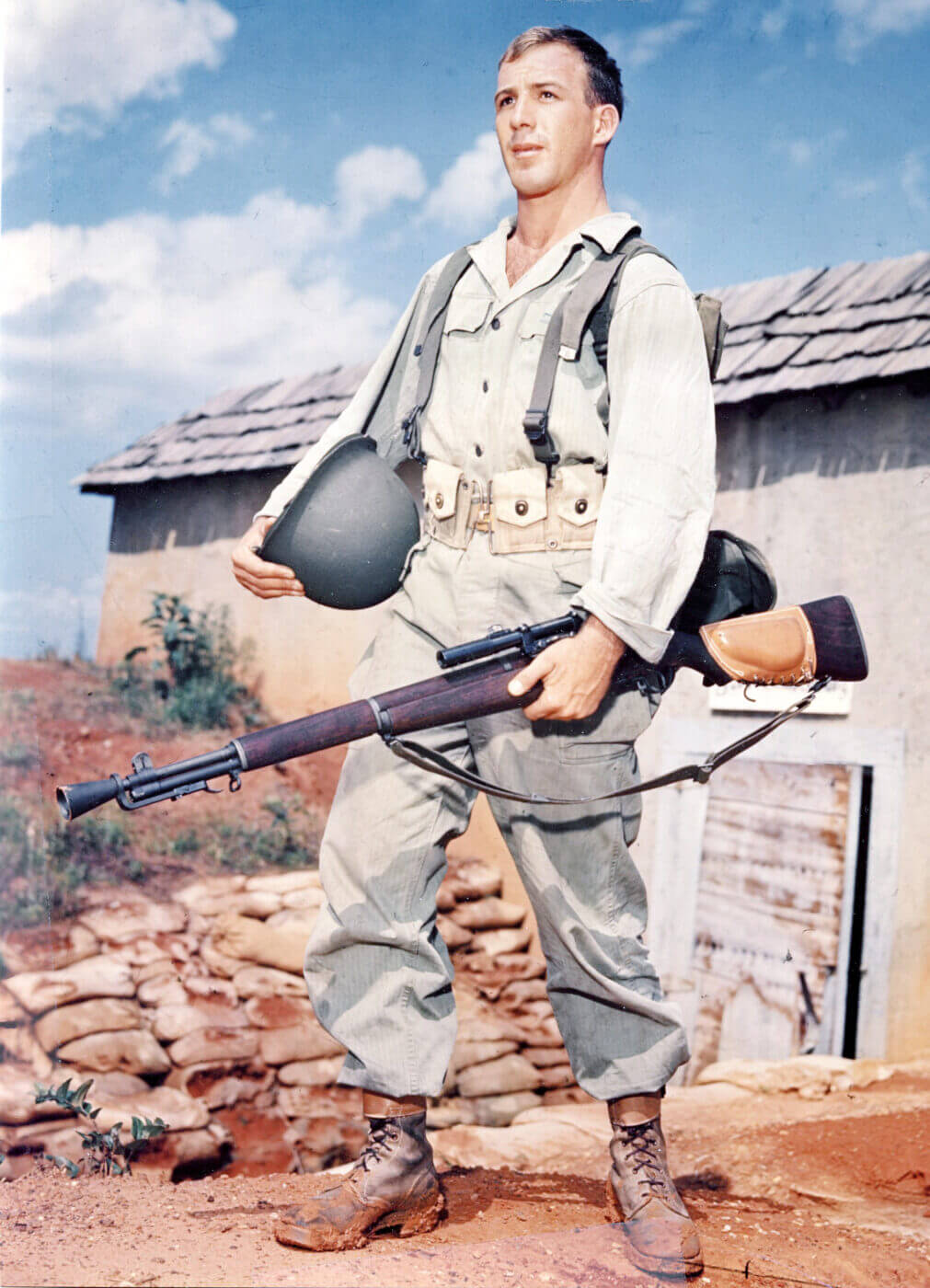
So far as is known, no M1C rifles were used in combat in Europe. I have included a pair of war-time color images in this article that show the M1C in Italy during 1945 — but these were likely taken after the war had ended. I have never found an image of an M1C in combat during World War II.
In his book Ordnance Went Up Front, World War II ordnance man Roy Dunlap briefly described the M1C:
They were beautiful outfits and I would have given anything to have had one during the war, but they arrived in the Philippines just before the Japanese surrendered. The rifles were selected, the best finished and tightest M1s I ever saw, and of course sights and rifle came together as a unit.
Ordnance Went Up Front
The M1C was equipped with the M2 flash hider and a leather cheek pad treated for mildew resistance (made by Kay Leather Company).
The Alaskan scope (M81/M82) was configured for “all-weather” use, with moisture-proof adjustment screw caps and critical internal parts.
The effective range of the M1C seems to be a matter of opinion, but 800 yards seems to be the agreed-upon practical limit. Of course, some exceptional marksmen scored kills at higher ranges.
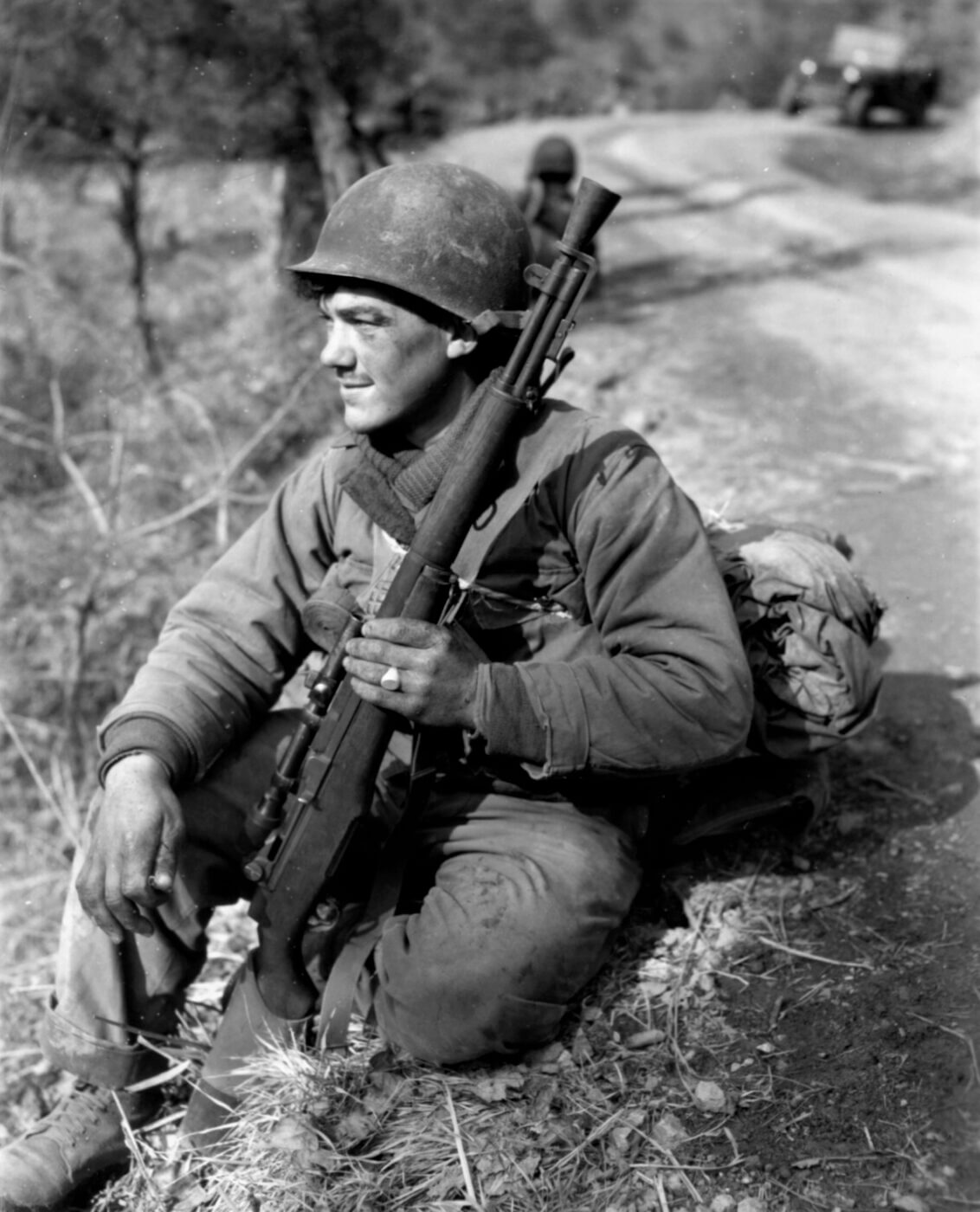
The M1C in the Korean War
The M1C saw the lion’s share of its combat duty during the Korean War (1950-1953).
Marine Staff Sergeant John E. Boitnott achieved a measure of national celebrity using the M1C in the counter-sniper role during his service with the 5th Marine Regiment at Outpost Yoke. While his observer/spotter PFC Henry Friday moved about in clear view of enemy snipers to draw their fire and expose their positions, Boitnott recorded nine confirmed kills over two days with his scoped Garand rifle.
During the Korean War, the majority of reports about the M1C were favorable, but as far as its use in the U.S. Army was concerned, there was little excitement about the M1C. Part of the reason for the indifferent attitude towards the M1 sniper rifle was the overall lack of a “sniper culture” in the Army.
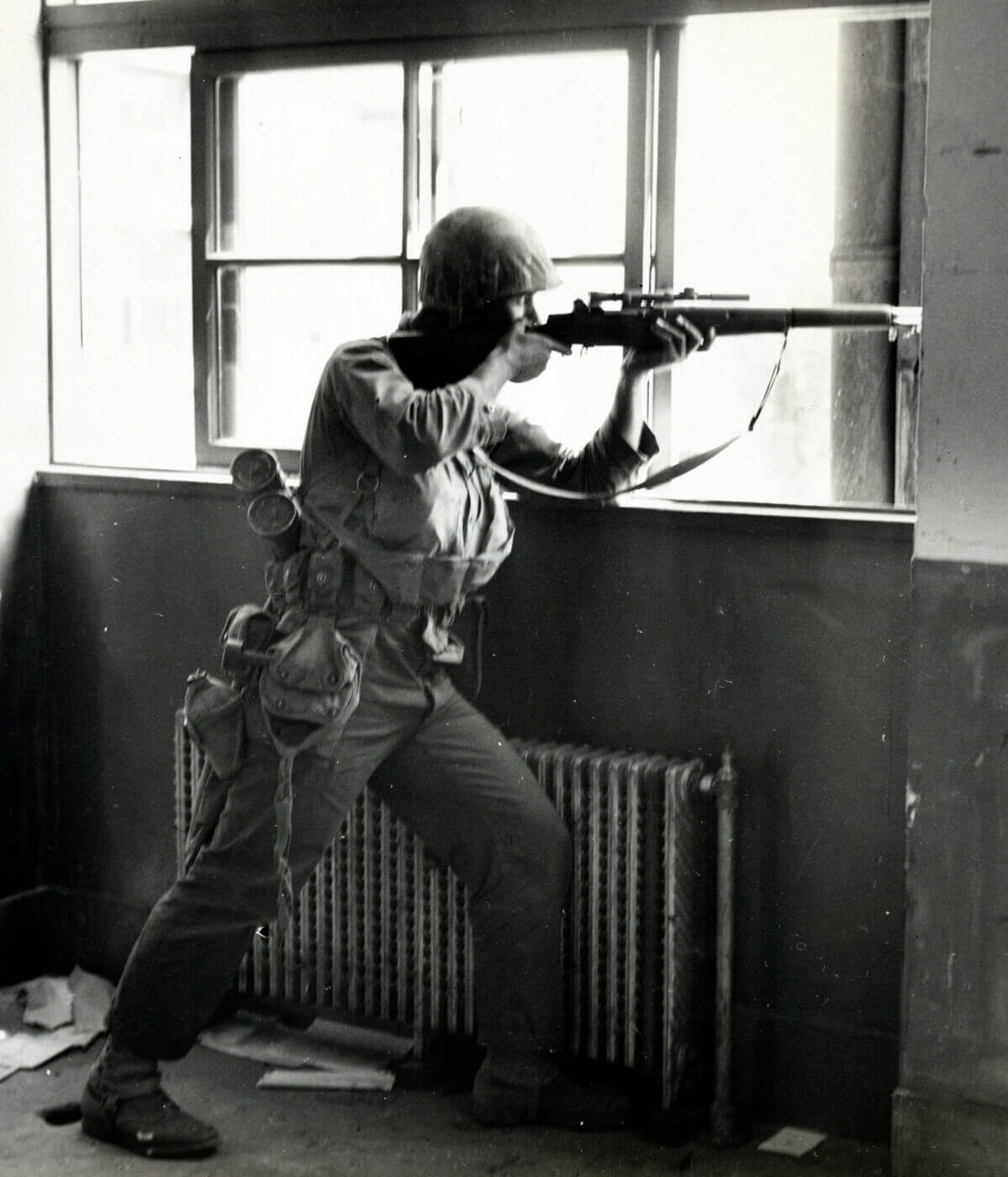
After World War II, the Marine Corps continued its scout-sniper program, with the snipers using a mix of M1903A1/Unertl, M1903A4, and M1C rifles. During the Korean War, the Marine Corps made some modifications to the M1C, particularly its telescopic sight.
Firearms researcher Bruce Canfield, an expert on the M1 rifle describes the USMC variant of the M1C, and the confusion about its proper designation:
The M1C was issued with the M81 and M82 scopes which had some deficiencies, especially the power. The Marine Corps tested several types of telescopes and settled on a 4x design to be supplied by Kollmorgen. A larger and somewhat different Griffin & Howe mount was also chosen by the Marines for their ‘new’ sniper rifles. The ‘new’ Marine Corps sniper rifle was given the designation ‘USMC 1952’ which was sometimes referred termed ‘MC 52’. The designation ‘MC-1’ referred only to the scope and mount, and not the entire rifle. Thus, reference to a ‘MC-1’ rifle is incorrect.
Bruce Canfield
End of the Line: The M1D
Just a few months after the M1C was adopted, the M1D was adopted as substitute standard in September 1944. While it may seem strange to develop separate, specialized sniping versions of the same rifle, the explanation is quite practical.
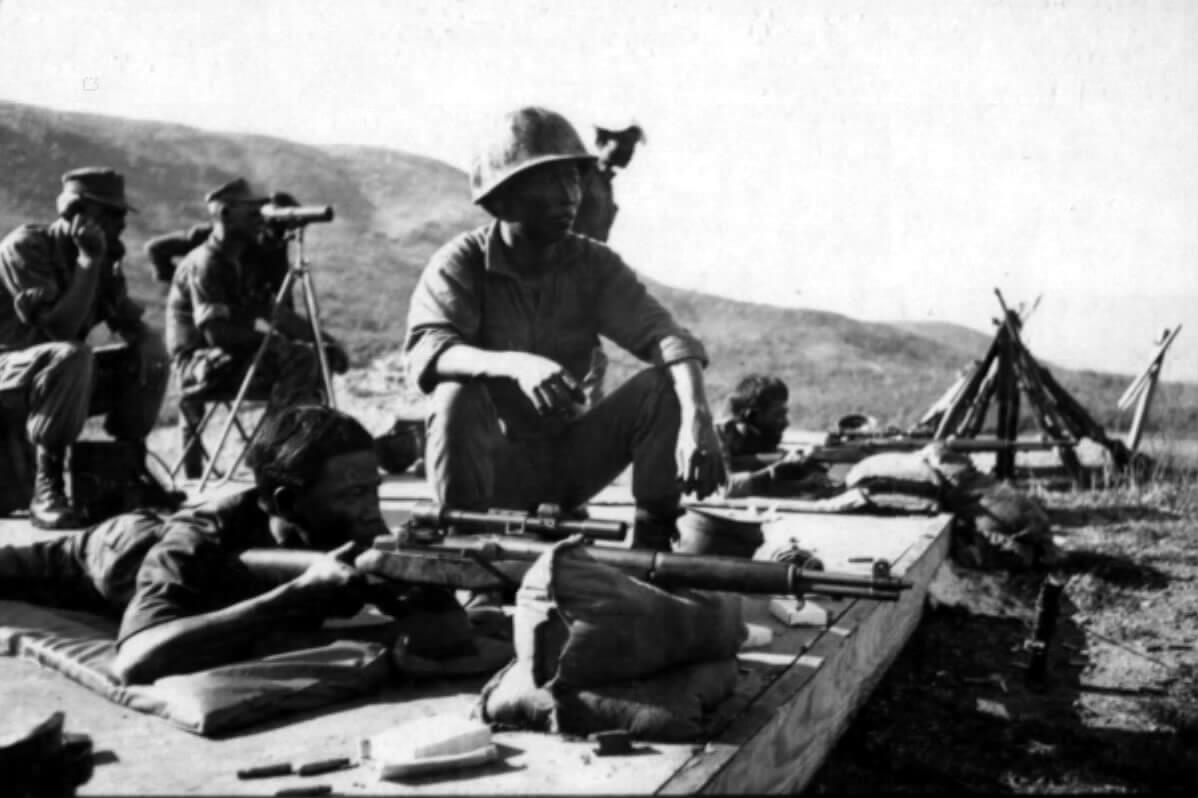
The M1D was adopted as a substitute for the M1C, creating an easier-to-produce fallback option in case production facilities were unavailable to build the required amount of M1C rifles.
The M1D project also resulted in the development of improved telescopic sights, culminating in the standardization of the 2.2X M84 scope, equipped with sealed optics, protective metal covers on the elevation/windage adjustment knobs, and a sliding light shade. The M1D’s scope could also be mounted without removing the rifle’s iron sights.
By comparison, the M1D was easily created by modifying standard M1 rifles, the conversion process requiring little more than replacing the standard barrel with the special M1D barrel which featured an integral mounting block.
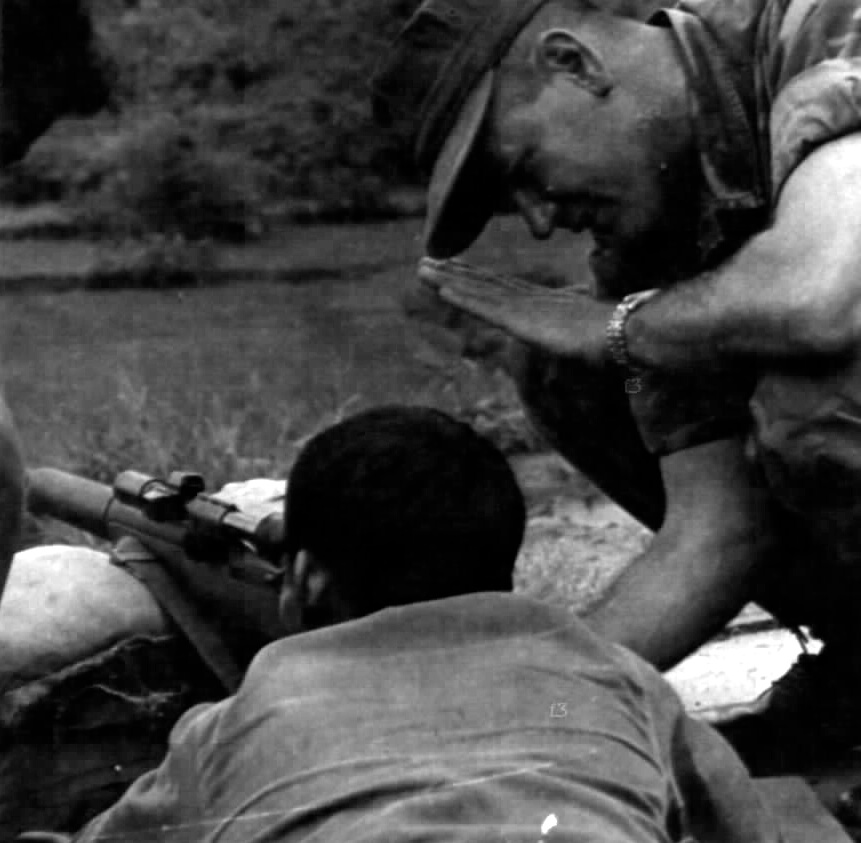
Even though the M1D was ultimately superior to the M1C, the timing of its production effectively kept it from seeing extensive combat. The M1D did not see service in World War II, and when it was put into full-scale production during the Korean War, that conflict was over before the M1Ds could fire shots in anger against the Communist Koreans and Chinese.
Small numbers of the M1D did serve with American troops in combat, with action in Lebanon during 1958, the Dominican Republic in 1965, and in the early days of America’s involvement in the Vietnam War.
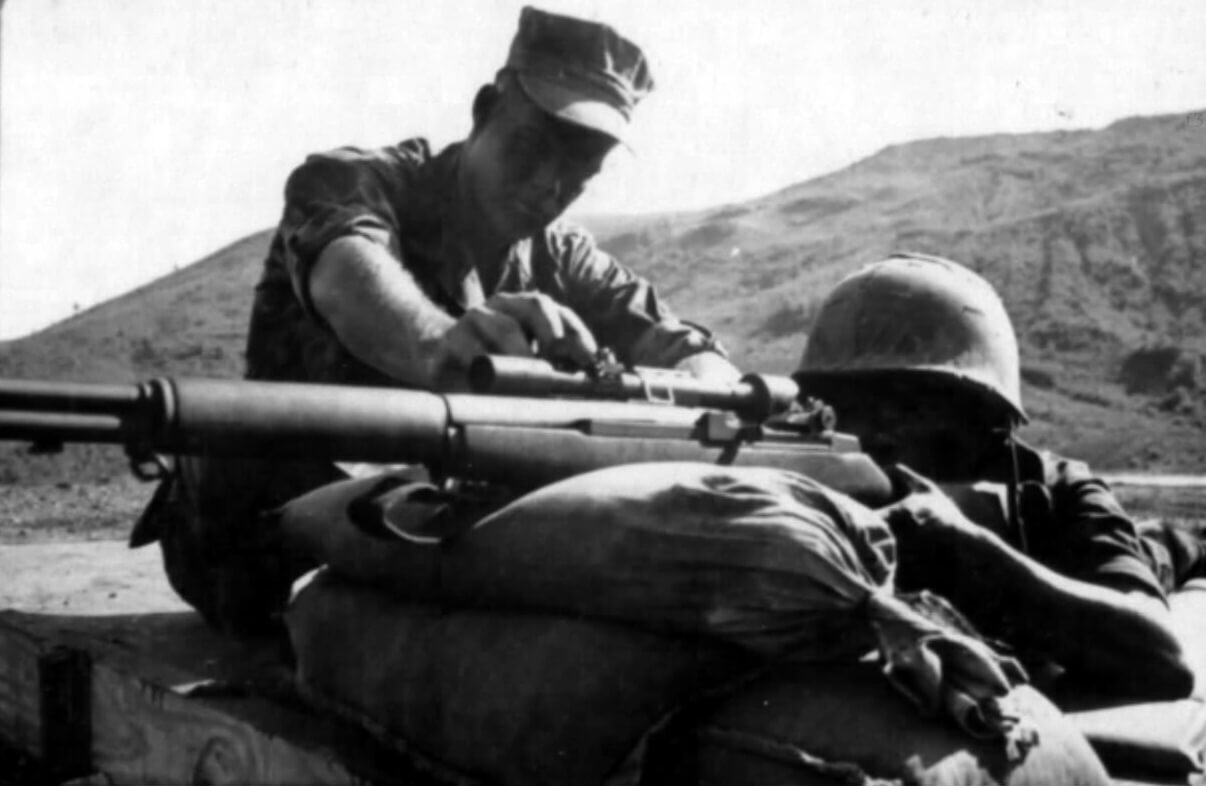
Over time, the U.S. Army paid more attention to sniping and finally, in 1987, the Army’s Sniper School was established at Fort Benning. There were still a handful of M1D rifles in service even then, particularly with Army Reserve and National Guard units.
Editor’s Note: Please be sure to check out The Armory Life Forum, where you can comment about our daily articles, as well as just talk guns and gear. Click the “Go To Forum Thread” link below to jump in and discuss this article and much more!
Join the Discussion
Continue Reading
Did you enjoy this article?

 269
269






